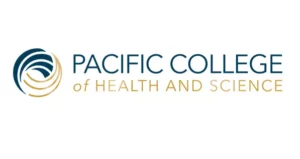Lou Gehrig’s disease, otherwise known as amyotrophic lateral sclerosis (ALS), is a highly degenerative disease affecting the nervous system. ALS hinders the power of the brain to pass messages to the voluntary muscles as the muscle neurons start degenerating. Eventually the neurons completely die off causing the muscle groups to waste away.
ALS gained the name of Lou Gehrig’s disease due to Lou Gehrig, a professional baseball player that developed the illness in 1939 and passed away some two years later.
The explanation for this degenerative disease remains unknown, with theories that it is caused by an infection or virus, although it has still to be proven. There is a genetic component, but to date, only 5 in 10 instances are in fact inherited.
The Initial Phase and Symptoms of Lou Gehrig’s Disease
Within the early phases, the patient may discover minor leg or arm weakness as the muscle mass begins to show signs of atrophy and ripples. This happens as the motor neurons are dying with the patient losing control over his muscles until he can no longer move them at all. They might also experience difficulties with speech and/or swallowing, along with cramping and muscle pain as common symptoms. The body continues to waste but the patient’s cognitive abilities remain intact.
Are you interested in becoming a certified massage therapist?
Visit the links below to explore our massage therapy programs at a campus near you:
Lou Gehrig’s disease occurs 60% more in men than women, primarily affecting those males between the ages of 35 and 65. Approximately 50% of the individuals diagnosed with this illness live three years or more. Of the remaining, a further 20 % live another 5 years or more with about 10 % making it past the 10 year mark or more. The scientist Stephen Hawking still lives with the illness and has done so for many years.
Massage Therapy & Other Treatments for ALS
As there is no known cure for Lou Gehrig’s disease, there is also no clearly defined treatment, although various treatments are used to minimize pain and suffering associated with the disease. A medication is being currently researched which will slow down the progression of ALS.
Therapeutic massage therapy is generally used in order to make patients more comfortable and minimize cramping and muscle pain. Gentle, passive massage and various ranges of motion prevent joints from becoming stiff. By increasing the blood supply into the muscle, therapeutic massage works to decelerate muscle atrophy and lower anxiety by lowering the quantity of cortisol, the body’s stress hormone. Should the patient’s muscle tissues be too atrophied to work on, then a simple hand, foot and scalp massage may help to make the individual with Lou Gehrig’s disease a great deal more comfortable.
Featured Posts:

